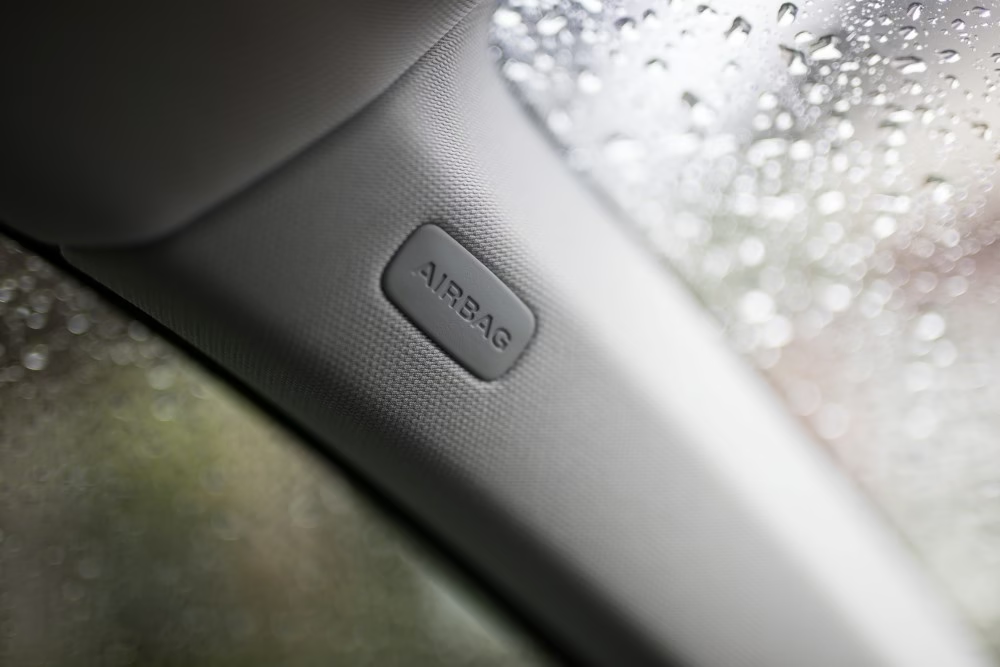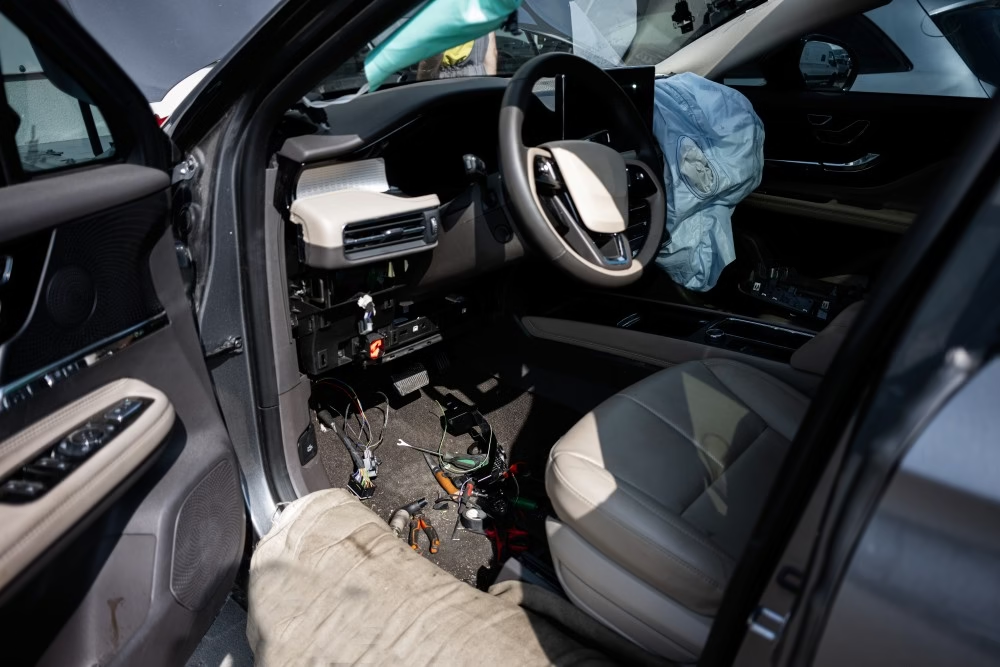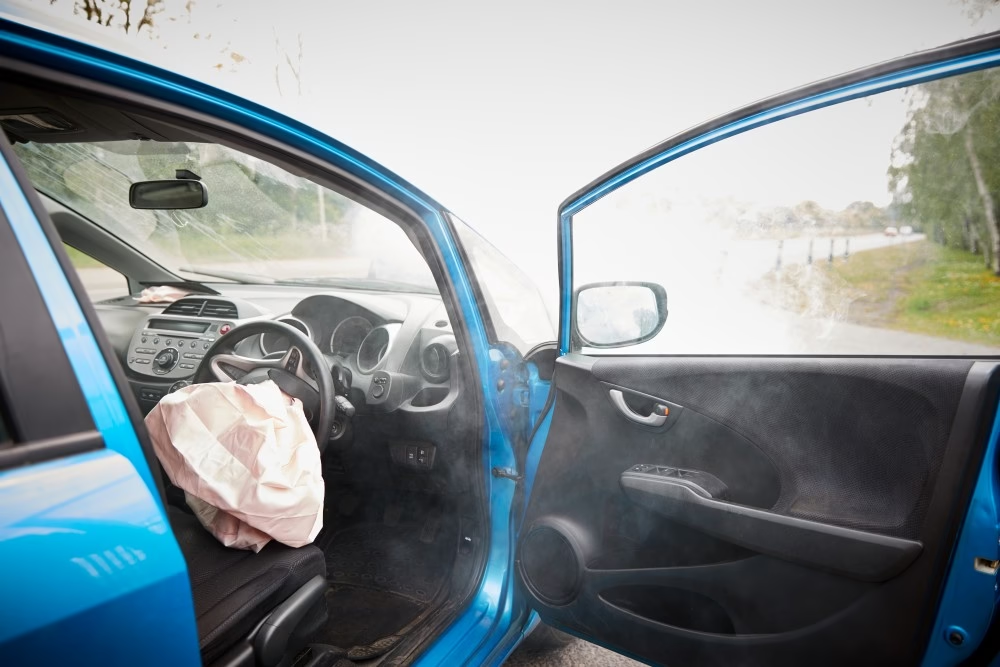When Maria’s 2018 Honda Civic was T-boned at an intersection in Phoenix last spring, she walked away with minor bruises. The side-impact airbag deployed flawlessly, creating a protective barrier between her head and the crushing door frame. What she didn’t know—and what most drivers never consider—is that a humble plastic component barely the size of a matchbook called the airbag curtain hinge clip had just delivered the performance of a lifetime, proving that in automotive safety, size definitely doesn’t determine strength.
Small Package, Big Responsibility
Don’t let its modest dimensions fool you—the airbag curtain hinge clip might be one of the most overachieving safety components in modern vehicles. This compact plastic fastener, typically measuring just 2-3 inches, carries the enormous responsibility of securing the side curtain airbag to the vehicle’s roof rail. When a side impact occurs, this little powerhouse must release at exactly the right moment and angle to allow the airbag to deploy downward, creating a life-saving protective curtain between occupants and the side windows.
Consider it this way: although a linebacker is 250 pounds, 6 feet 2 inches, this clip is less than an ounce, but bears the same sort of life-saving burden. NHTSA statistics revealed that side-impact accidents contribute about 23 percent of the total fatalities amongst the occupants of the passenger vehicles. These powerful mini-devices have provided the possibility of the introduction of the side curtain airbags that decrease the fatalities in these accidents by 37 percent in front-seat occupants and 52 percent in the rear-seat occupants. Not bad, when you can lose that in your couch cushions.

When David Faces Goliath (And Sometimes Loses)
Dave Thompson, a master technician at a Sacramento dealership, has witnessed these small warriors in their most vulnerable moments. “People assume bigger means stronger, but these clips face challenges that would humble much larger components,” Thompson explains. “The most common issue I encounter is brittleness from age and temperature extremes. These compact guardians are made from specific grades of nylon that can become fragile after 8-10 years, especially in states like Arizona or Texas where dashboard temperatures regularly exceed 160°F.”
The clips are called upon to do the work in an apparent paradox that would spell a challenge to any engineer: that they be designed to grasp with the tenacity of a bulldog in normal driving, only to release in a predetermined time during a crash. The need to be contentious and tractable at the same time, on a command, makes them especially prone to early wear when exposed to rigorous climates. That’s akin to expecting an individual to work as a security guard, and a quick-draw artist.
When Little Things Make Big Headlines
In 2019, Ford recalled 1.2 million vehicles specifically because these pocket-sized components weren’t performing up to their outsized responsibilities. The defective clips were causing side curtain airbags to deploy unexpectedly, proving that when small parts misbehave, they can create headline-worthy chaos. This recall highlighted how something you could accidentally vacuum up could have massive safety implications for millions of drivers.
The same case happened to Toyota with their 2015-2017 Camry, as clips produced during particular assembly runs would tend to exhibit stress fracture. These little parts proved significant enough that the automaker ended up swapping out more than 400,000 of them nationwide, which is a lesson that the smallest soldiers deserve the largest rescue efforts sometimes.
The Mighty Mite’s Professional Secrets

Professional diagnosis of airbag curtain hinge clip issues requires specialized scanning equipment worth more than most people’s cars—quite the technological support system for such a small component. The clips themselves cost between $15-45 depending on the vehicle make, making them one of the most affordable life-saving devices you’ll ever purchase. However, labor costs can reach $200-300 due to the precise handling required around airbag systems.
“The tricky part isn’t the clip replacement—these little guys are actually pretty straightforward,” notes Jennifer Martinez, who runs an independent auto repair shop in Denver. “The real challenge is ensuring the entire airbag system recalibrates correctly afterward. We see DIY attempts gone wrong regularly, where someone replaced a clip but didn’t properly reset the system’s computer. It’s like changing a light bulb but forgetting to flip the switch.”
Size vs. Seasons: The Underdog’s Biggest Battle
Winter poses special difficulties to these doughty little warlike creatures. The temperature changes created in a freeze/thaw cycle between frosty outside air and toasty places on the inside subject it to expansion stress and contraction pressures to rival that of even the most skilled yoga teacher. An insurance adjuster in Minnesota, Robert Chen, has reported that claims on airbags have been increasing by 15 percent during the weeks of February and March and can be linked to clip failures due to extreme low temperatures. It would be like having a little one do jumping jacks in a freezer, jumping to a sauna then to the freezer again, in rapid speed, says Chen. At some point something will have to give way.”
FAQs
Q: How do I know if my airbag curtain hinge clip is failing? A: Warning signs include an illuminated airbag light on your dashboard, unusual clicking sounds from the roof area when driving over bumps, or visible sagging of the headliner near the side windows.
Q: Can I replace these clips myself? A: While technically possible, it’s strongly discouraged. Airbag systems are under federal regulations, and improper handling can cause accidental deployment or system failure. Always use certified technicians.
Q: How often should these clips be inspected? A: Most manufacturers recommend inspection every 5-7 years or 75,000 miles, though vehicles in extreme climates may need more frequent checks.
Q: Are aftermarket clips safe? A: Only use OEM or manufacturer-approved clips. Aftermarket alternatives may not meet the precise failure specifications required for proper airbag deployment.
The Bottom Line: Respect the Small Stuff
Your airbag curtain hinge clip represents the ultimate proof that heroism comes in all sizes. While you’ll hopefully never witness its moment of glory, knowing these small guardians are properly maintained provides invaluable peace of mind. In a world obsessed with bigger, faster, and stronger, these modest components remind us that sometimes the most important jobs are handled by the smallest players.
Regular maintenance checks, climate-appropriate storage when possible, and prompt attention to airbag warning lights ensure these critical components remain ready to deliver their outsized protection when seconds matter most. Because when it comes to your safety, this tiny clip definitely means business.



